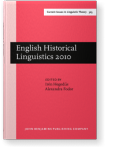The temporal and regional contexts of the numeral ‘two’ in Middle English
The numeral denoting ‘two’ – like other ‘small’ cardinal numbers (‘one’, ‘three’ and ‘four’) – has had a complicated history. In Old English it exhibited different forms depending on gender; cf. tweȝen masc. (modelled on OE beȝen ‘both’, cf. Brunner 1965: 252), twā fem. (also neut.) and tū neut., the last form confined to Old English. The Middle English period witnessed the split of the continuation of the masculine forms into those with 〈ei/ey〉 (South/Midland) and 〈ai/ay〉 (North; so Brunner 1963: 55). The subsequent evolution led to the elimination of the former masculine and neuter forms, except in some specific uses (cf. twain used by sailors on the Mississippi) and the survival of the earlier feminine form reflecting twā. But a competition between the historical masculine with its reduced form twei/twai and the ‘regular’ two, was in full force before 1500, although these two types ceased to demonstrate gender distinction. As the standard English historical grammars devote little attention to the evolution of the numeral system, the present paper aims at determining a more exact distribution of the forms of the numeral denoting ‘two’ in Middle English. The evidence collected from the Innsbruck Corpus of Middle English Prose fails to fully confirm the traditional view of the distribution of the forms of ‘two’ in dialects.
